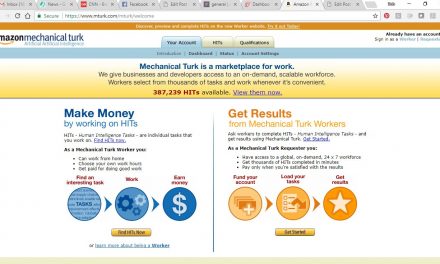If you’re looking for ways to manage multiple outsourcing partners in your business, then look no further! Here are several key strategies that can help you successfully manage multiple outsourcing partners. From establishing clear expectations to creating a cohesive strategy, these tips will help you get the most out of your outsourcing partnerships and ensure that your business is running smoothly. So, let’s dive in and learn more about managing multiple outsourcing partners!
Define your requirements
Before you decide to outsource any part of your business operations, it is essential that you define your requirements clearly. This means that you need to have a thorough understanding of the tasks or services you will be outsourcing and why. You should ask yourself the following questions: What do I need to be done? What are the deliverables? What are the timelines? Who will be responsible for managing the project?
Once you have identified the answers to these questions, you should communicate your requirements to the potential outsourcing partners. Make sure that your specifications are as detailed and specific as possible, as this will help you find the right partner for the job. This can help reduce delays and misunderstandings, leading to better results. Additionally, make sure that you discuss the budget and any other relevant information with the potential outsourcing partner so that everyone is on the same page.
Do your research
Before committing to any outsourcing partner, it is essential that you do your research. First, determine the scope of the project and the services you will need from your outsourcing partner. Knowing exactly what you need will help you identify the right partners for the job.
Next, research each potential partner. Look into their experience, success rate, and reputation. Read customer reviews and find out what other businesses have said about their experiences. It’s also a good idea to check with your industry colleagues who have experience working with these outsourcing partners. This will give you an insider’s view on how the partners operate and whether they would be the right fit for your business.
Finally, compare your options. Make sure you understand the terms of the agreement and whether there are any hidden fees or additional costs associated with the partnership. Don’t be afraid to ask questions or negotiate a better deal if needed. After doing your due diligence, you should have a good idea of which partner best suits your needs and budget.
Set clear expectations
When working with multiple outsourcing partners, it’s important to be clear about what you expect from each partner. Make sure to communicate your goals and expectations from the outset, and review them periodically. Your expectations should include:
- Outlining the specific tasks each partner is responsible for
- Setting deadlines for the completion of each task
- Establishing a system of accountability and feedback
- Establishing processes for making changes or adjustments as needed
- Establishing procedures for resolving any disputes that may arise
- Defining the roles and responsibilities of all parties involved
- Agreeing upon payment methods, terms, and conditions
It’s also important to make sure that all your partners have access to the same information and resources. This will ensure that each partner is aware of the project’s timeline and objectives, as well as any changes that may occur along the way. With clear expectations set from the start, you can avoid confusion or misunderstandings down the line.
Communicate regularly
In order to ensure the success of your outsourcing relationships, it is essential that you stay in touch with all of your outsourcing partners regularly. Keeping open lines of communication will help you stay on top of deadlines and understand any changes in your requirements or expectations. Additionally, staying in contact will allow you to troubleshoot any issues quickly and give feedback when necessary.
It is important to have a communication strategy in place that outlines how often you should communicate and what methods should be used. Make sure to determine the best way to reach out to each partner: email, phone, video conference, etc. Additionally, decide on how often you should touch base, such as daily, weekly, or monthly.
When communicating with your partners, be sure to be clear and concise. Make sure everyone knows what is expected of them and provide any relevant updates or changes. You should also take the time to listen to their feedback and concerns and address them promptly. Finally, always strive for a positive relationship with your partners by expressing gratitude for their hard work and showing appreciation when they do a good job.
Keep an open mind
When managing multiple outsourcing partners, it is important to keep an open mind. This means that you should be willing to consider different ideas and approaches to the project. It is important to remember that your outsourcing partners are experts in their field and may be able to offer creative solutions that you haven’t considered.
It is also important to stay flexible when working with multiple partners. Depending on the project, timelines and costs may change as the project progresses. You should be prepared to adjust your plan as needed, while still keeping the overall goal in mind.
Additionally, you should take into account any feedback from your partners, even if it differs from your own ideas. It is often helpful to have a third-party perspective on a project, so be sure to ask for input from your outsourcing partners and then evaluate it objectively. By maintaining an open mind and being flexible when necessary, you will ensure that your project progresses smoothly and achieves its desired outcomes.
Be flexible
Having the ability to be flexible with your outsourcing partners is a key element of successful management. Businesses must understand that external partners may require more flexibility than internal teams when it comes to their operating structure, and you should be prepared to adjust your expectations accordingly.
For example, if a partner’s performance is falling short of expectations, or if new needs or goals arise, it’s important to discuss these issues openly and come up with solutions that are mutually beneficial. This may mean providing more training or support, adjusting timelines, or offering additional incentives. Whatever the situation, working with an outsourcing partner should be a two-way street, and both parties must be willing to compromise when necessary.
Being flexible also means being open to suggestions and feedback from your partner. After all, they know their processes best and may have creative ideas for improving efficiency or achieving results. Take the time to listen to their insights, and if you agree, put them into practice. By implementing a few simple changes, you may find that you’re able to get more out of your partnership than you ever expected.
In short, managing multiple outsourcing partners is all about building strong relationships through open communication and willingness to make adjustments along the way. By remaining flexible and taking the time to work out any issues that may arise, you can ensure that your business is making the most of its partnerships.
Review and revise
Regularly reviewing and revising your processes for managing multiple outsourcing partners is essential in order to ensure that the services you receive are meeting your requirements. At each review, it’s important to evaluate whether the partners you have chosen are still the right fit for your business, and if there are any changes that need to be made.
When conducting a review, it’s important to consider factors such as cost, the quality of work received, the performance of each partner, and how well they meet deadlines. You should also take time to assess the communication you receive from each partner and consider how well you are able to collaborate with them. If any changes need to be made, then make sure that these are clearly communicated to all parties involved.
It’s also important to consider ways in which you can further improve the way you manage your multiple outsourcing partners. Could new technologies or services help improve communication between yourself and the partners? Are there any additional resources or skills that your team may need to manage them more efficiently? Taking the time to review your processes and ask these questions can help ensure that you get the best out of your outsourcing relationships.









